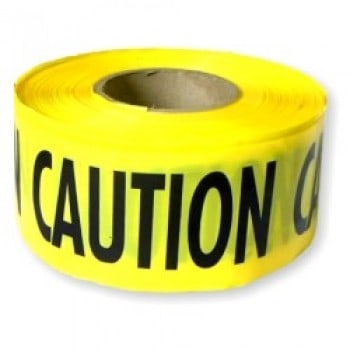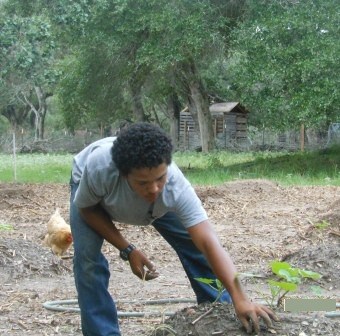If you like to live independently and feel you can provide for yourself without interacting with the society around you, you can become a prepper but need some Homesteading Skills. Preppers prepare for a number of different things, including economic downturns like the one the world is going through at the moment. So, if disaster does strike, they are in a good position to avert it and can easily adapt to the changing mores.
One cannot just become a prepper by forgoing social convention and declaring yourself a survivalist. There are a few essential skills you need to take up. These homesteading skills are what will stand you in good stead when you have to fend for yourself and society around you is in a state of chaos. So, before making the transition, you must learn these homesteading skills to be Prepping Survival:
Top 5 Homesteading Skills Every ‘Prepper’ Must Learn
Gardening for Prepping
The key to become totally self-sufficient and independent is being able to grow your own food.
If you can produce the food items you like to eat, you don’t need to rely on anyone else for it.
Gardening is a specialized skill, particularly when it comes to growing food crops.
You have to understand the effect of climate on a given crop or the watering requirements of the plants you grow.
Even if you are stocking food while prepping for the worst-case scenario, there is the risk that your reserves run out sooner than you expect.
Knowing how to garden will prove to be useful then.

Foraging For Survival
Foraging is a broad term and has been used to cover fishing as well.
By this definition, foraging refers to the act of procuring animal meat to use as food.
Unless you are a bona fide vegetarian, you cannot just rely on what you grow.
You will feel the craving for meat.
Moreover, your body needs the nutrients present in meat.
Therefore, you have to learn how to fish and hunt animals whose meat you can eat.
Breeding Livestock on your homestead
Why hunt when you can breed?
Breeding livestock is one of the most important homesteading skills you can learn.
If you know how to care for cows, chickens and ducks, you can have a continuous supply of meat.
This way, you don’t have to rely on forging for food or fishing to get you through.
Also, you can get food items like eggs and milk from your livestock.
Use the milk to make cheese and other dairy items and expand the range of food options you have.

Homesteading Carpentry
Having a proper shelter is important, especially during adverse weather conditions.
If you cannot put up a half-decent hut or shack, it could become difficult for you to survive the cold or the heat, depending on the season.
Also, your carpentry skills will enable you to make furniture should you need any.
You don’t have to become an expert.
A basic primer course should suffice.
Self-Entertainment
If you cannot live without your smartphone, computer and television, you have to work extra hard to become a prepper.
Perhaps the most important of all homesteading skills you will have to develop is self-entertainment.
You have to leave all your gadgets on this side when you decide to make the transition.
Having even a basic gadget on you means you aren’t totally disconnected from society, which means you aren’t a genuine homesteader.
So, find ways to entertain yourself without using any technology.
These are the top homesteading skills every prepper must learn.
You will find it hard to become a survivalist without mastering these.
How to Protect Your Home While You’re Away For Security Reasons
If you are a prepper, you are going to be spending a lot of time away from home.
Leaving your home unattended is a major security risk you shouldn’t take.
For one, a home is a major investment, perhaps the biggest you make in your lifetime.
Also, your valuables and important belongings are inside.
Coming home to find them missing is something no one would want.
This is why you need to learn how to protect your home while you’re away.

The key to protecting your home is to give off the impression that the home is not empty.
To help you achieve this, here are some tips on how to protect your home while you’re away:
Suspend All Deliveries
If you have newspapers, milk or any other item delivered to your doorstep daily, suspend the service till you are back.
In case you don’t want to suspend the deliveries, for whatever reason, have someone collect them for you.
Having a pile of newspapers on your doorstep is a giveaway that no one is home.
Have a Car in the Driveway
There is no point in parking your car in the driveway as you won’t be taking it out.
A great idea is to ask one of your neighbors to use your driveway to park a car every day.
Since a car will be seen leaving and entering the driveway at least once a day, it would give off the impression that someone is there.
Don’t Announce Your Departure
When planning to leave your home, don’t announce it to the world.
Only let your neighbors and closest friends and family members know.
People often make the mistake of posting about their departure on Facebook or Twitter or through emails to their contacts.
Limit the number of people you inform to ensure no one else gets to know about it.
Disconnect the Phone
Perhaps the most important step of all is to disconnect the phone.
If a phone is heard ringing several times over the course of a day with no one answering it, it indicates that the home is vacant.
Even if you don’t want to disconnect the phone, at least turn the ringer volume down so that it can’t be heard.
Invest in a Motion Detector
Buy a couple of motion detectors and attach them to the lights outside your home.
This way, if someone tries to break in, alarms will go off.
More often than not, that is enough to scare thieves away.
Hire a Lawn Maintenance Service
Last, but not the least, you should hire a lawn service.
They will come in from time to time and tend to the grass.
This way, the grass will not overgrow, which is another sign that no one is home.
During winters, hire someone to shovel away the snow that piles up in your driveway or porch.
In addition to these tips, make sure that you don’t leave a key to the house in the vicinity.
Unless you have to provide a neighbor access to your home to feed the fishes, etc, keep the keys with you.
It is also a good idea to take the Neighborhood Watch into confidence.
Tell them that you will be away for a while.
These tips are the answer to how to protect your home while you’re away.

